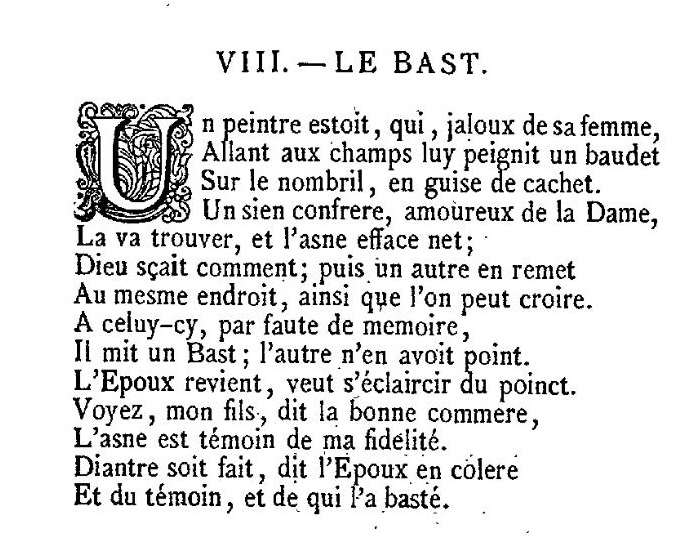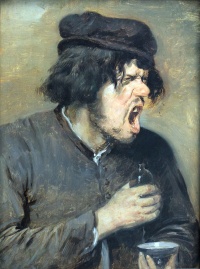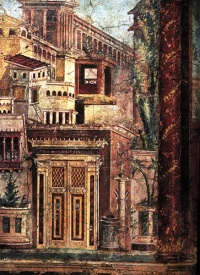Three years ago I find Le Bât[1], a painting by Pierre Subleyras of a man ostensibly painting on the private parts of a woman. While I knew that it was based on a tale by Jean de La Fontaine, I could not figure out which one.
Last week my friend Paul Rumsey brings the Renaissance print known by the mysterious name “Purinega tien duro” to my attention. It represents a phallic bird.
I start researching.
I find that uccello is Italian slang for phallus. The proof is the Decameron; in the tale of the nightingale (“he hath put the nightingale in his own cage and not in that of another”).
Via that episode I find an enumeration of the more bawdy episodes from the Decameron, being ‘Alibech and Rustico‘ (which I treated at length in my book De geschiedenis van de erotiek), ‘the priest metamorphosing a woman in a mare‘ and ‘Alatiel‘s revirgination‘.
While doing this, I stumble on another Pierre Subleyras painting, The Mare of Peasant Pierre (French: La Jument du compère Pierre), also apparently based on a tale by de La Fontaine, which is the equivalent of above-mentioned Decamerone’s “the priest metamorphosing a woman in a mare”.
The source of the La Fontaine tale is in his Contes et nouvelles en vers, a book I had short-changed in my own book: I only mentioned his rendition of Hans Carvel’s ring, failing to see that it is a compendium, a summary of a great many interesting stories, a history of written erotica up until that age.
I find that “Le Bât” is translated as “The Pack Saddle.”

I go back to the Contes et nouvelles en vers and I find the text of “The Pack Saddle”. It is the story of a jealous husband who paints a seal (a painting of an ass) on his wife’s private parts, making her inaccessible to other men because the paint would wipe off during physical contact. The wife predictably does engage in amorous encounters, her lover decides to re-paint the wiped-off painting of the ass but he erroneously paints one detail too many. He paints a saddle where before there was none.
A FAMOUS painter, jealous of his wife;
Whose charms he valued more than fame or life,
When going on a journey used his art,
To paint an ASS upon a certain part,
(Umbilical, 'tis said) and like a seal:
Impressive token, nothing thence to steal.
A BROTHER brush, enamoured of the dame;
Now took advantage, and declared his flame:
The Ass effaced, but God knows how 'twas done;
Another soon howe'er he had begun,
And finished well, upon the very spot;
In painting, few more praises ever got;
But want of recollection made him place
A saddle, where before he none could trace.
THE husband, when returned, desired to look
At what he drew, when leave he lately took.
Yes, see my dear, the wily wife replied,
The Ass is witness, faithful I abide.
Zounds! said the painter, when he got a sight,--
What!--you'd persuade me ev'ry thing is right?
I wish the witness you display so well,
And him who saddled it, were both in Hell.
Case closed.
I feel like I am tying the last loose ends of erotic history.









